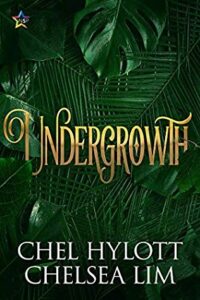Seventeen-year-old Mariam finds herself surviving a Los Angeles that has been overrun by a magic jungle of horror. Along the way, she meets a group of other survivors, and together they become a family. But Mariam has her secrets. She magically heals and cannot die thanks to a deal with the devil her father made on her behalf. And the jungle they find themselves in has been caused by her father as well. She must learn to put her faith in others and earn their trust in return to undo the mess he made.
There’s a strong sense of setting here that feels a lot like Jeff VanderMeer’s Southern Reach trilogy. The lush descriptions of an LA gone to hell under a horrific jungle and the introduction of Mariam as a tough-as-nails type make it an intriguing story and give it a strong start. Unfortunately, that doesn’t hold.
Mariam tries to keep herself emotionally distant to avoid the pain of loss but ends up getting attached to a rag-tag found family. But she still tries to hold her secrets, and that ends up hurting them. At every turn in the story when Mariam is given a chance to be honest, she chooses to lie and continues to create a rift between herself and her new family. She never seems to learn that taking this route causes more pain and danger, and so it doesn’t feel like she undergoes a major character arc.
Additionally, the pacing happens too fast to feel like her attachments are believable. Her crush on Camila quickly evolves into a deep connection between the two girls, but it doesn’t seem organic. Despite this, the relationship that starts to blossom between them is sweet, and it adds a sense of levity to the apocalyptic situation.
Throughout the novel, the author sprinkles details about Mariam’s cultural heritage, with tidbits like talking about her Ramadan dinners and the names she calls her family by. Readers can appreciate the subtle way Mariam’s background comes to light, giving her some depth without overexplaining everything.
There is also a transgender character, Hana, whose identity is revealed in a moment when her hair has to be cut because of lice. It adds another interesting layer to the story without turning into a teaching moment. The author writes many of these character revelations well, showing representations of body dysmorphia and disability in the middle of the end of the world.
As the novel ends, it all happens rather fast and feels like it gets tied up in a neat bow, considering the situation. There is a lack of satisfaction with so many unanswered questions about the world itself. It’s never discussed exactly how long the jungle apocalypse occurred until the very end. The story never shows how the world outside of LA coped or reacted to the events outside of a few glimmers of a military scene at the beginning.
Overall, none of the characters have much development, especially not Mariam or her dad, the villain. But it does get a happily ever after for her and Camila, and it was a fun adventure.

